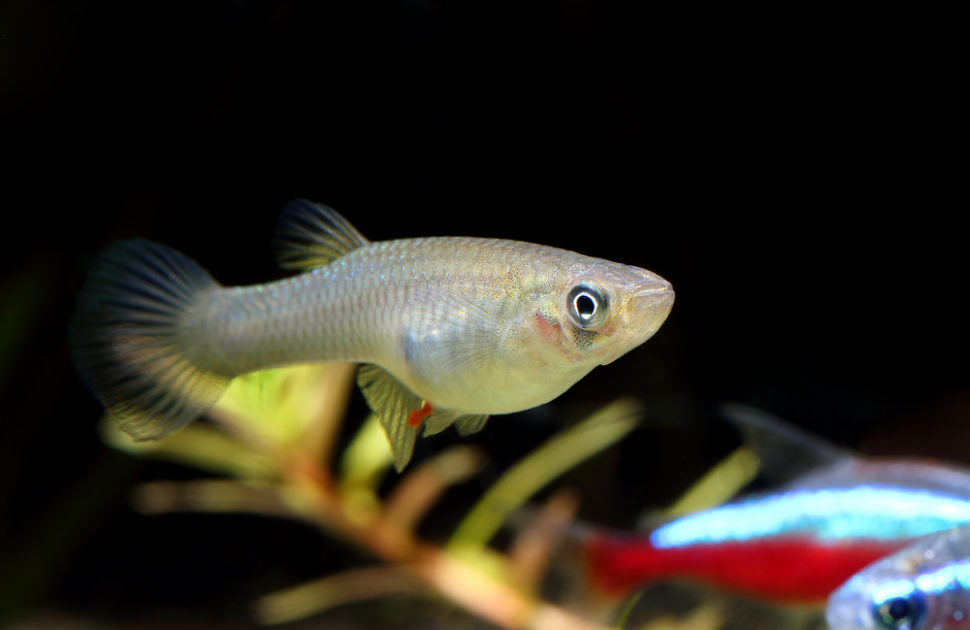Whether for military use, medicine, or industry, engineers have explored biomimetic robotic designs to emulate nature’s best solutions.
Biomimetic robots can also be used in marine environment protection. This led the non-profit organization Robots in Service of the Environment (RSE) to develop robot technologies that address critical environmental challenges.
Crowdfunded in part by a Kickstarter campaign, RSE’s Guardian LF1 is a robot designed to dive deep underwater hunting for an invasive species of fish.
This underwater machine, kind of a robotic fish, eliminates lionfish that’s posing a danger to coral reefs and local marine life.
The threat of invasive species is even greater to freshwater ecosystems where resources are limited for native marine species to survive. But there’s a robotic fish for that too!
Robotic Fish Scare Away Mosquitofish
Mosquitofish (Gambusia affinis), a fish that at first glance may look harmless is one of the most dangerous invasive species ever, both terrestrial and marine.
The International Union for Conservation of Nature (UICN) has placed mosquitofish — which infests freshwater like rivers, lakes, and ponds — on its list of the world’s 100 worst invasive alien species.
A highly predatory species native to the freshwaters of the eastern and southern United States, mosquitofish has spread far outside its native ecosystem to turn into a worldwide pest.
The mosquitofish roam fresh waterways looking for the eggs of economically crucial native fish and rare fish species, like amphibians, that it preys on.
Difficult to eliminate, the conventional ways to control invasive species, like trapping and chemical toxicants, don’t work on the mosquitofish. Even the degradation of water, its natural habitat, doesn’t seem to be affecting mosquitofish populations.
But now this invasive species may have finally met its robotic match!
Researchers from NYU Tandon School of Engineering and University of Western Australia developed a robotic fish that could offer a solution to prevent the spread of mosquitofish.
The team modeled their robotic fish on the largemouth bass, freshwater fish species that’s one of the mosquitofish’s natural predators.
Results of the study showed that “even brief exposure to a robotic replica of the largemouth bass can provoke meaningful stress responses in mosquitofish, triggering avoidance behaviors and physiological changes associated with the loss of energy reserves, potentially translating into lower rates of reproduction.”
Setting aside the invasive nature of mosquitofish, the purpose of the research is not to show this fish in a bad light! The mosquitofish isn’t pure evil as it can also be useful.
Since mosquitofish like feasting on mosquito larvae, they were introduced in many parts of the world as a biocontrol agent against mosquito populations, especially those carriers of viruses like dengue.


















Comments (0)
Most Recent